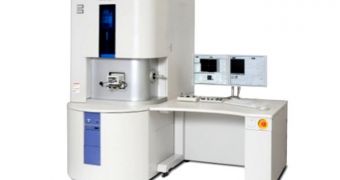Investigators at the Clemson University, in the United States, and Hitachi announce the development of an extremely advanced electron microscope, which has already been installed in one of the university's laboratories. The instrument will boost Clemson's ability to conduct high-sensitivity research.
The new Hitachi NanoDuet NB5000 Focused Ion and Electron Beam System (FIEBS) was installed in the Advanced Materials Research Laboratory (AMRL) at the university. The research group here is already a global leader in materials science and research, as well as in nanotechnology.
Installing the instrument here was possible thanks to a strong partnership that Clemson has with Hitachi High Technologies America Inc. The AMRL can now use the device to benefit both its industry partners and academia. Its benefits can be applied to a wide range of research types.
At the same time, Hitachi gains access to a prominent location to advertise its newest line of electron microscopes to experts in both the public and private sectors. The arrangement is therefore beneficial to both parties, a Clemson press release explains.
The relationship between the university and Hitachi “already has helped Clemson build what we believe is the nation’s finest university-based electron microscope facility,” says Clemson University president James F. Barker.
“Electron microscopy is one of the cornerstone research capabilities that is helping Clemson University drive innovation and economic development for our state and nation,” the official goes on to say.
At the telescope's unveiling ceremony – which was hosted by the AMRL on Monday, October 3 – several Clemson officials were joined by the executive vice president of Hitachi HTA, Craig Kerkove, as well as the senior design engineer for NB5000 Hitachi, Toshihide Agemura.
“This collaboration between Clemson and Hitachi will certainly be one of the great events in Hitachi’s 100-year history and will further our goal to not only be a manufacturer of scientific instruments, but to be an active partner with the academic community,” Kerkove said at the event.
Due to the fact that electrons operate at a wavelength 100,000 times shorter than photons making up visible light do, electron microscopes have greater resolve power than optical microscopes. The latter have a maximum resolution of 200 nanometers, and their maximum magnification does not exceed 2,000x.
The most advanced electron microscopes can reach magnification levels of up to 10,000,000x.

 14 DAY TRIAL //
14 DAY TRIAL //